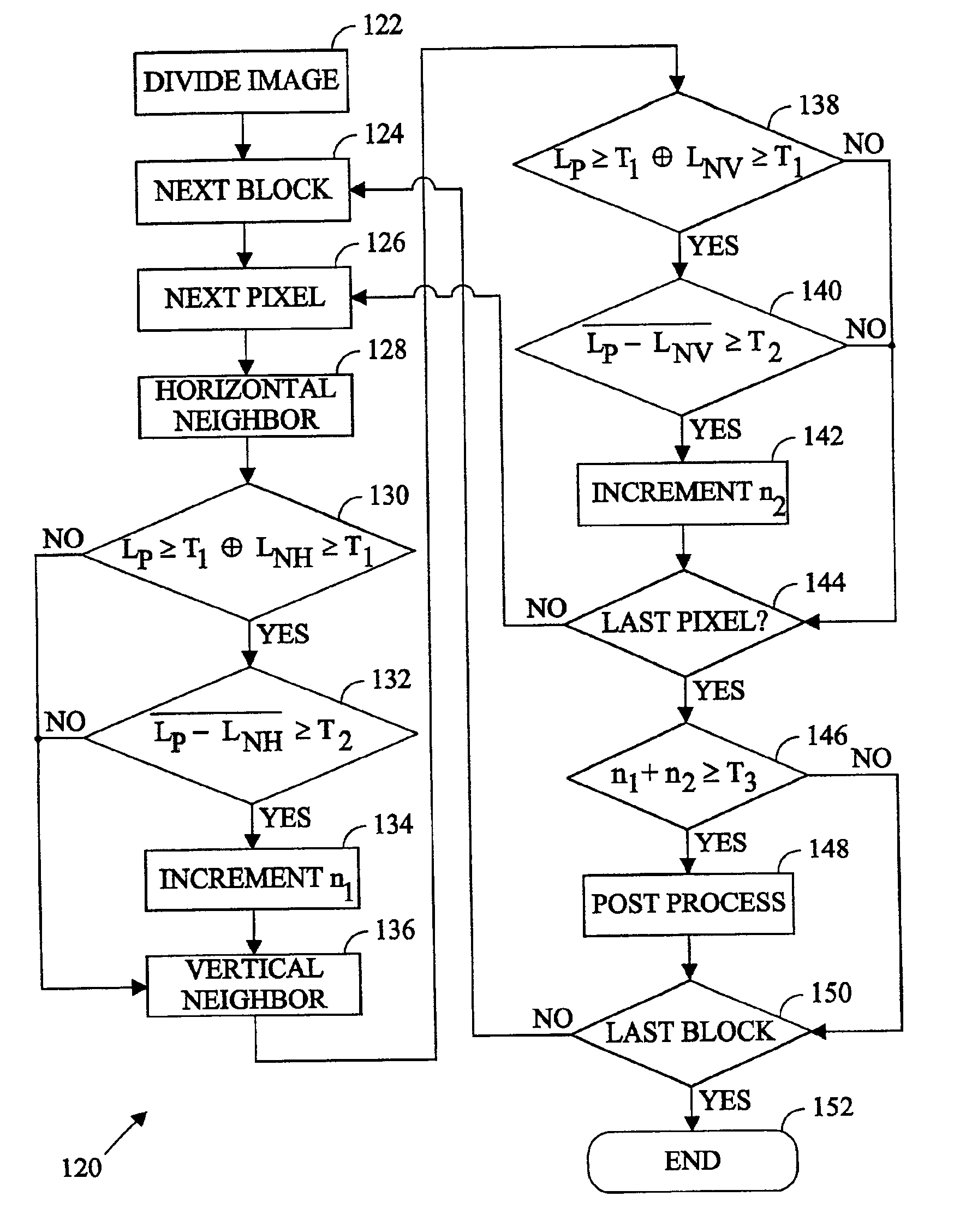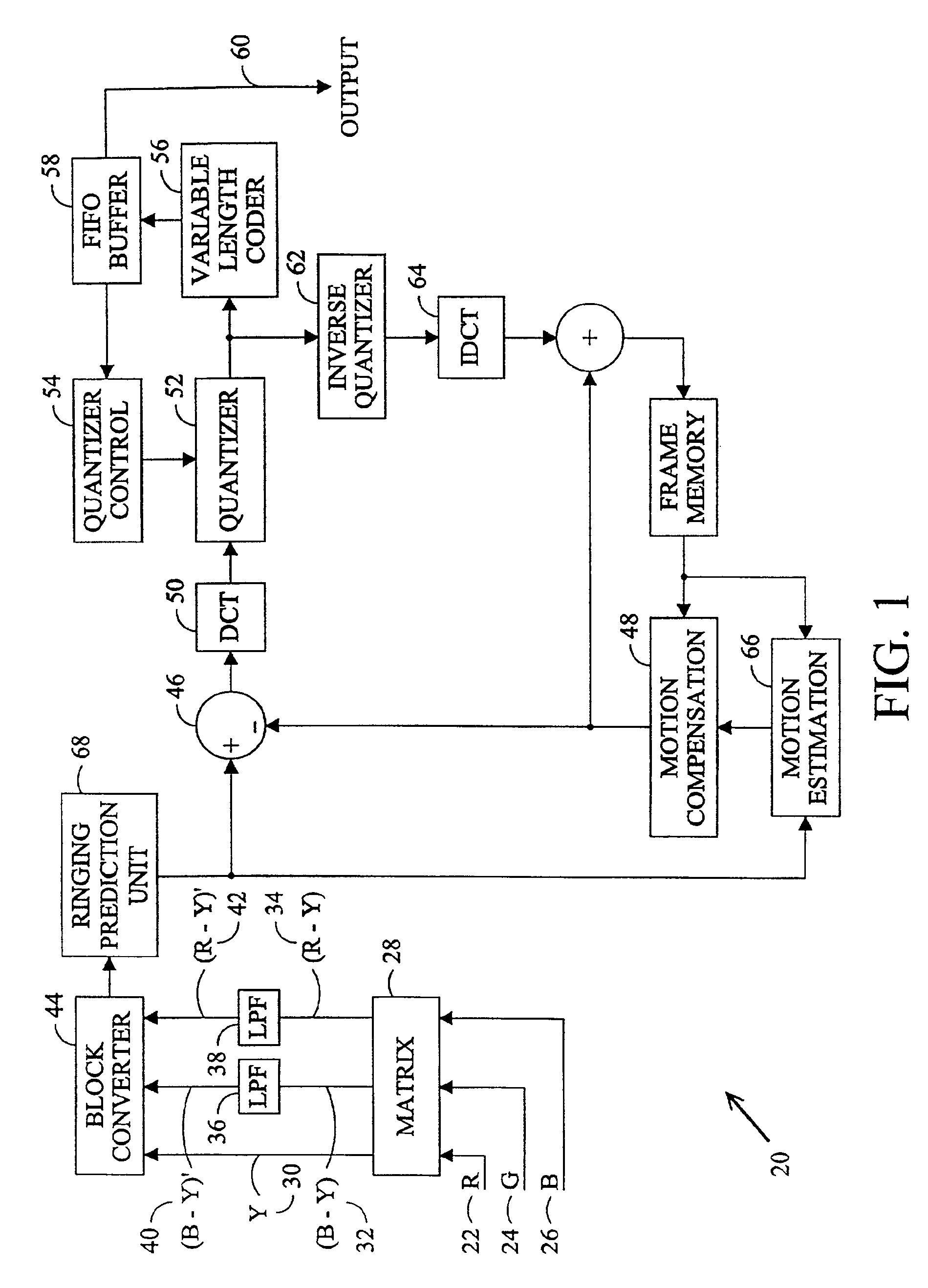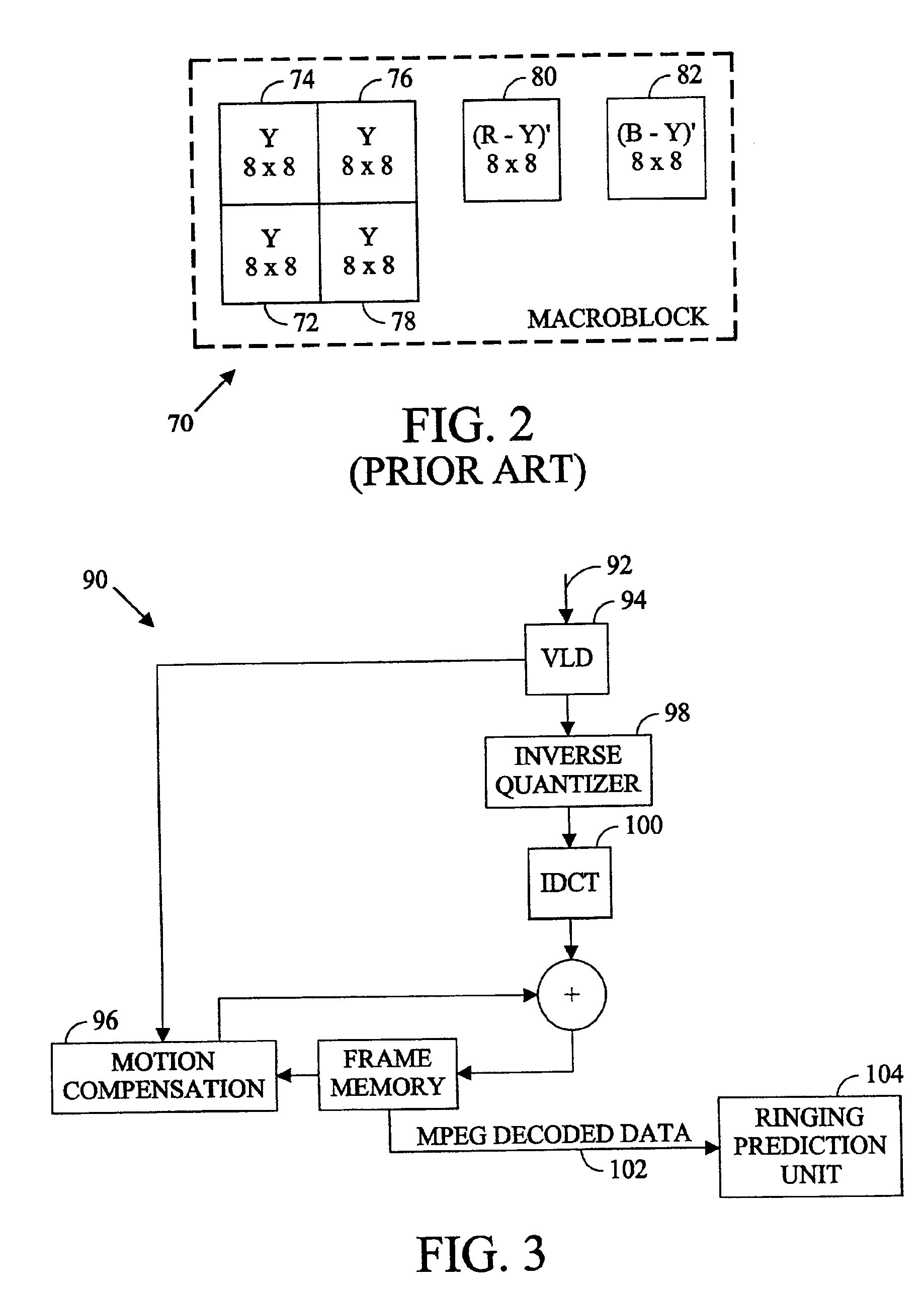Predicting ringing artifacts in digital images
a technology of digital images and artifacts, applied in the field of postprocessing of digital images, can solve the problems of blockage effect, reconstructed image may exhibit “staircase noise, compression artifacts can be annoying to viewers of reconstructed image,
- Summary
- Abstract
- Description
- Claims
- Application Information
AI Technical Summary
Problems solved by technology
Method used
Image
Examples
Embodiment Construction
Block-based, transform coding is widely used for digital imaging coding and is an underlying process of the JPEG (ISO 10918) still image coding standard and the MPEG-2 (ISO 13818) video coding standard. However, it is well known that block-based, transform coding can produce visually objectionable artifacts in the reconstructed image. Typical artifacts include the blocking effect where the blocks of pixels utilized in the transform coding are visible in the reconstructed image. The blocking effect can be enhanced at an edge to produce a staircase appearance of blocks in the vicinity of the edge. A third artifact of compression is the ringing effect or mosquito noise in the vicinity of sharp edges in an image. Ringing noise comprises jagged or fuzzy lines in the vicinity of strong edges in the reconstructed image. Ringing artifacts are common around text because text includes many sharp edges.
Postprocessing is commonly applied to digital images to mitigate the effects of compression ...
PUM
 Login to View More
Login to View More Abstract
Description
Claims
Application Information
 Login to View More
Login to View More - R&D
- Intellectual Property
- Life Sciences
- Materials
- Tech Scout
- Unparalleled Data Quality
- Higher Quality Content
- 60% Fewer Hallucinations
Browse by: Latest US Patents, China's latest patents, Technical Efficacy Thesaurus, Application Domain, Technology Topic, Popular Technical Reports.
© 2025 PatSnap. All rights reserved.Legal|Privacy policy|Modern Slavery Act Transparency Statement|Sitemap|About US| Contact US: help@patsnap.com



